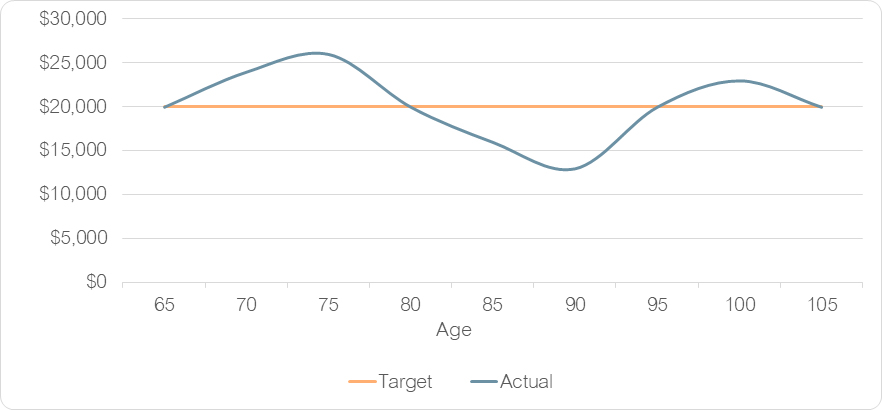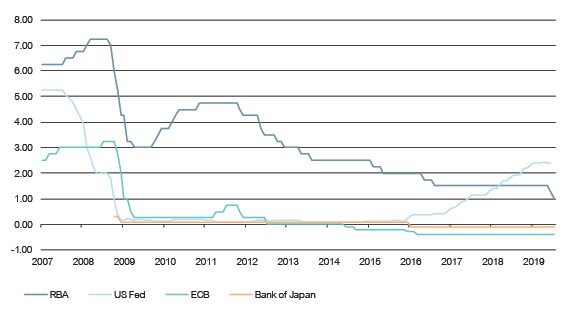Many behavioural studies have shown there are several traits and biases that can impede us from making reasonable decisions about everything from what to eat to how to invest. Understanding these biases and considering whether they may be negatively impacting decisions can be beneficial when implementing long-term investment plans. These studies show, in general, people have asymmetric risk profiles and fear losses more than the expectation of gains by at least a 2:1 margin[1]. Interestingly, and perhaps not surprisingly, this ratio increases substantially as people approach retirement.
American psychologist and economist, Daniel Kahneman, who won a Nobel Prize for his work challenging the prevailing assumption of human rationality in modern economic theory has stated, ‘If you have an individual whose objective is to maximise wealth at a certain future point in time, then loss aversion is very bad because loss aversion will cause that individual to miss out on many opportunities.’
This loss avoidance trait stands in contrast to a basic investment principal, that investors need to accept higher risk (and higher potential for near-term losses) in order to achieve higher returns over the long term, particularly during market sell-offs. When faced with losses, rational decision-making can become impaired by the emotional desire to avoid more losses.
There are a wide range of cognitive biases that can impact retirement plans, some are listed below:
Confirmation bias
Confirmation bias is the natural human tendency to seek information that confirms an existing point of view or hypothesis. This can lead to overconfidence if investors keep seeing data that appears to confirm the decisions they have made. This overconfidence can result in a false sense that nothing is likely to go wrong, increasing the risk of being blindsided when something does go wrong.
Information bias
Information bias is the tendency to evaluate information even when it is useless in understanding a problem or issue. Investors are exposed to an array of information daily, and it is difficult to filter through this and focus on the relevant information. In general, investors would make superior investment decisions if they ignored daily share price movements and focused on prices compared to the medium-term prospects for the investments. By ignoring daily share price commentary, investors would overcome a dangerous source of information bias in the investment decision making process.
Loss aversion bias
Loss aversion is the tendency for people to strongly prefer avoiding losses than obtaining gains. The loss aversion effect can lead to poor and irrational investment decisions, where investors refuse to sell loss-making investments in the hope of making their money back. Investors fixated on loss aversion can miss investment opportunities by failing to properly consider the opportunity cost of their investments.
Anchoring bias
Anchoring bias is the tendency to rely too heavily on, or anchor to, a past reference or one piece of information when making an investment decision. For example, if you were asked to forecast a stock’s price in three months’ time, many would start by looking at the price today and then make certain assumptions to arrive at a future price. That’s a form of anchoring bias – starting with a price today and building a sense of value based on that anchor.
How do we try and overcome the biases when building retirement portfolios?
The objective based nature of Lonsec’s Retirement portfolios means there is a greater focus on absolute rather than relative performance. Additionally, the portfolios have been constructed to manage risks, including:
- Market and sequencing risk
- Inflation risk
- Longevity risk
Some investment strategies that can assist in controlling for these risks include:
Variable beta strategies can vary equity market exposure by allocating to cash in periods where equity market opportunities are perceived to be limited due to expensive valuations, or where market downside risk is considered high.
Long / Short – Active Extension (also known as 130/30 funds) utilise a broad range of strategies including short selling and adjusting the net equity position for performance enhancement, risk management and hedging purposes.
Multi-asset real return funds invest in a wide range of asset classes, with the managers having considerable flexibility in the type and percentage of asset classes allocated to. Typically, these funds will seek to limit downside risk, while also targeting a real return i.e. a CPI + objective.
Real assets such as property and infrastructure, commodities and inflation linked bonds can assist in managing against inflation risk.
When constructing the Retirement portfolios, Lonsec takes a building block approach by assigning a role for each fund – yield generation, capital growth and risk control.
The yield component of the portfolios generate yield, or a certain level of income from investments that have differing risk return characteristics. The capital growth component is designed to generate long term capital growth, with limited focus on income, and is more suited to early retirees. The risk control component is critical for retirement portfolios and is designed to reduce some of the market risks in the yield and capital growth components. It is important to note that the risk control part of the portfolios will not eliminate these risks but aims to mitigate them. Asset allocation and diversification are also important ingredients in managing the overall volatility of the portfolios.
The Retirement portfolios can assist in managing the risks that impact retirees, however it is important to note that none of these strategies provide a guaranteed outcome. The range of products that offer certainty of income or capital protection such as annuities has increased in recent years, in recognition of Australia’s aging demographics and demand for greater certainty in retirement. Separate guidance on the use of annuities is available from Lonsec.
[1] Gachter, Johnson, Herrmann (2010). Individual – level loss aversion in riskless and risky choices. Columbia Business School






